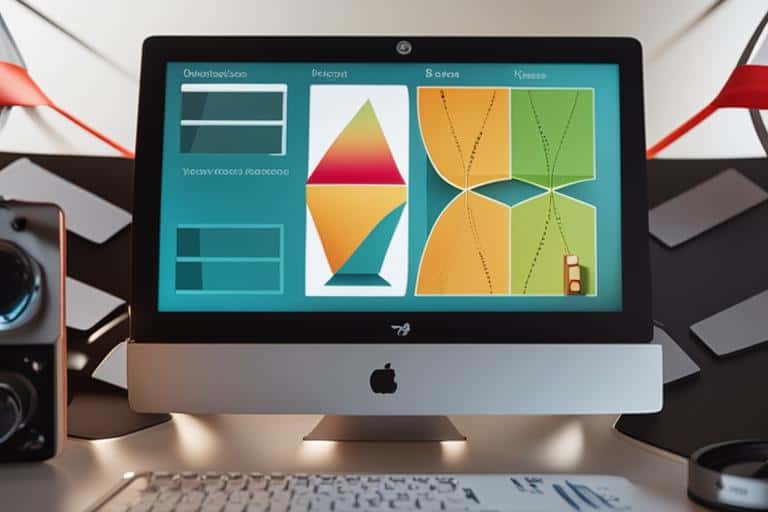Learn about UX Design
By reading this article, you will learn:
– The difference between UX and UI design, the role of a UX designer, and the key principles of UX design.
– The components of UX design, the stages of UX design, and the usability heuristics by Jakob Nielsen and Rolf Molich.
– How to use Nielsen’s heuristics in UX design and get a good example of a heuristic in UX design.
In the realms of technology and design, the term “UX” is frequently tossed around, but what is UX design truly about? User Experience (UX) design is a multifaceted discipline rooted in the enhancement of user satisfaction by improving the usability, accessibility, and pleasure provided in the interaction between the user and the product. Think of UX design as the architecture of interactions on digital platforms, shaping every touchpoint a user encounters.

What is UX design?
At its core, UX design involves a deep understanding of users, what they need, what they value, their abilities, and also their limitations. It involves a comprehensive design process to improve the quality of the user’s interaction with and perceptions of the product and any related services. UX design doesn’t just end at websites or applications; it extends to any product or service interaction, ensuring a seamless and satisfying experience.
Insider Tip: The best UX designs are often invisible to users. They provide a seamless journey through the product, allowing users to achieve their goals effortlessly.
What is the difference between UX and UI design?
Although often used interchangeably, UX design and User Interface (UI) design are distinct. UI design is the look and feel, the presentation and interactivity of a product. But UX design is the process of enhancing user satisfaction by improving the usability, ease of use, and pleasure provided in the interaction between the user and the product.
Insider Tip: Think of UX as the entire experience a user has, while UI is specifically about the product’s interface.
What does a UX designer do?
A UX designer’s role is multifaceted and involves research, concept development, prototyping, testing, and implementation. They must understand the user’s needs and balance them with technical feasibility and business viability. From conducting user interviews to designing wireframes and interactive prototypes, UX designers create the blueprint for experiences that are both intuitive and delightful.

What are the key principles of UX design?
The key principles of UX design include understanding user needs, creating personas, designing with a purpose, and iterative testing. Accessibility, usability, and desirability are also essential components, ensuring that every user can have a positive experience, regardless of their ability or context.
What are the 5 components of UX?
According to Jesse James Garrett’s “The Elements of User Experience” model, the five components of UX are:
- Strategy
- Scope
- Structure
- Skeleton
- Surface
Each layer builds upon the last, from abstract objectives and constraints to the concrete final product.
What are the 3 main components of UX design?
While Garretts model outlines five components, another way to look at UX design is through three main components:
- Look (Visual Design)
- Feel (Interaction Design)
- Usability (Functional Efficacy)
These components encapsulate the aesthetic, emotional, and functional aspects of the product experience.
What are the 4 main components of UX?
Building on the three components, the fourth can be considered as:
- Value (User Satisfaction)
Value ensures that the product not only functions well but also fulfills the user’s needs and expectations, providing a meaningful experience.
What are the 6 components of UX?
When we extend to six components, we include:
- Adaptability (Responsive Design)
- Accessibility (Universal Design)
These components ensure that the products design works well across various devices and is accessible to all users, including those with disabilities.
What are the 5 stages of UX design?
The five stages of UX design, often referred to as the design thinking process, are:
- Empathize
- Define
- Ideate
- Prototype
- Test
These iterative stages help designers to stay user-centric and continuously refine the product based on feedback.
What are the 4 stages of UX design?
Some models simplify the design process into four stages:
- Discover (Research)
- Define (Goals)
- Develop (Ideation and Prototyping)
- Deliver (Implementation)
What are the 7 phases of the UX design process?
An even more detailed UX design process can include seven phases:
- Strategy
- Research
- Analysis
- Design
- Prototyping
- Testing
- Implementation and Evaluation
Each phase has its distinct methods and purposes, ensuring a thorough approach to design.
What are the 10 heuristics?
The 10 usability heuristics are principles for interface design, originally defined by Jakob Nielsen. These heuristics serve as a checklist for basic user interface design and include:
- Visibility of system status
- Match between system and the real world
- User control and freedom
- Consistency and standards
- Error prevention
- Recognition rather than recall
- Flexibility and efficiency of use
- Aesthetic and minimalist design
- Help users recognize, diagnose, and recover from errors
- Help and documentation

What is a good example of a heuristic in UX design?
A good example of heuristic in UX design is the ‘Recognition rather than recall’ principle. This suggests that interfaces should minimize the user’s memory load by making objects, actions, and options visible. An example is having persistent navigation menus rather than requiring users to remember where to find features.
How do you use Nielsen’s heuristics in UX design?
Using Nielsen’s heuristics involves evaluating a design against these ten principles to identify potential usability issues. During usability testing, designers can use these heuristics as a framework to analyze user interactions and uncover areas for improvement.
Insider Tip: Regularly revisiting Nielsen’s heuristics throughout the design process can help keep the focus on usability and prevent common design pitfalls.
Personal Experience: Applying Nielsen’s Heuristics in UX Design
As a UX designer, I recently encountered a challenging project where I had to improve the usability of a mobile banking app. One of the main issues was the lack of error prevention, as users often made accidental transactions due to unclear prompts.
I decided to apply Jakob Nielsen’s heuristics to address this issue. By focusing on “error prevention” and “recognition rather than recall,” I redesigned the app to include additional confirmation screens for transactions and clearer language for prompts. After implementing these changes, user errors decreased significantly, leading to a much-improved user experience.
This experience reinforced the importance of incorporating Nielsen’s heuristics into UX design, as they provided a practical framework for identifying and addressing usability issues effectively.
Conclusion
UX design is an essential aspect of creating digital products that not only look good but are also intuitive, accessible, and pleasurable to use. By understanding and applying the principles, components, and heuristics of UX design, designers can craft experiences that resonate with users and meet their needs effectively. As technology continues to evolve, the role of UX design will only become more crucial in shaping how we interact with the digital world around us.
Encourage your readers to engage by asking for their experiences with UX design, inviting them to share their thoughts, or suggesting they sign up for a UX design course to learn more about this fascinating field.
Questions
Q.What is UX?
A.UX stands for User Experience, which focuses on enhancing user satisfaction by improving the usability and accessibility of a product or system.
Q.Who benefits from good UX?
A.Everyone benefits from good UX, as it ensures a more enjoyable and efficient interaction with digital products for both users and businesses.
Q.How can UX be improved?
A.UX can be improved through user research, usability testing, and iterative design to understand and address user needs and pain points.
Q.Isn’t UX just about making things look pretty?
A.No, UX is not just about aesthetics. It encompasses the entire user journey, including functionality, accessibility, and ease of use.

